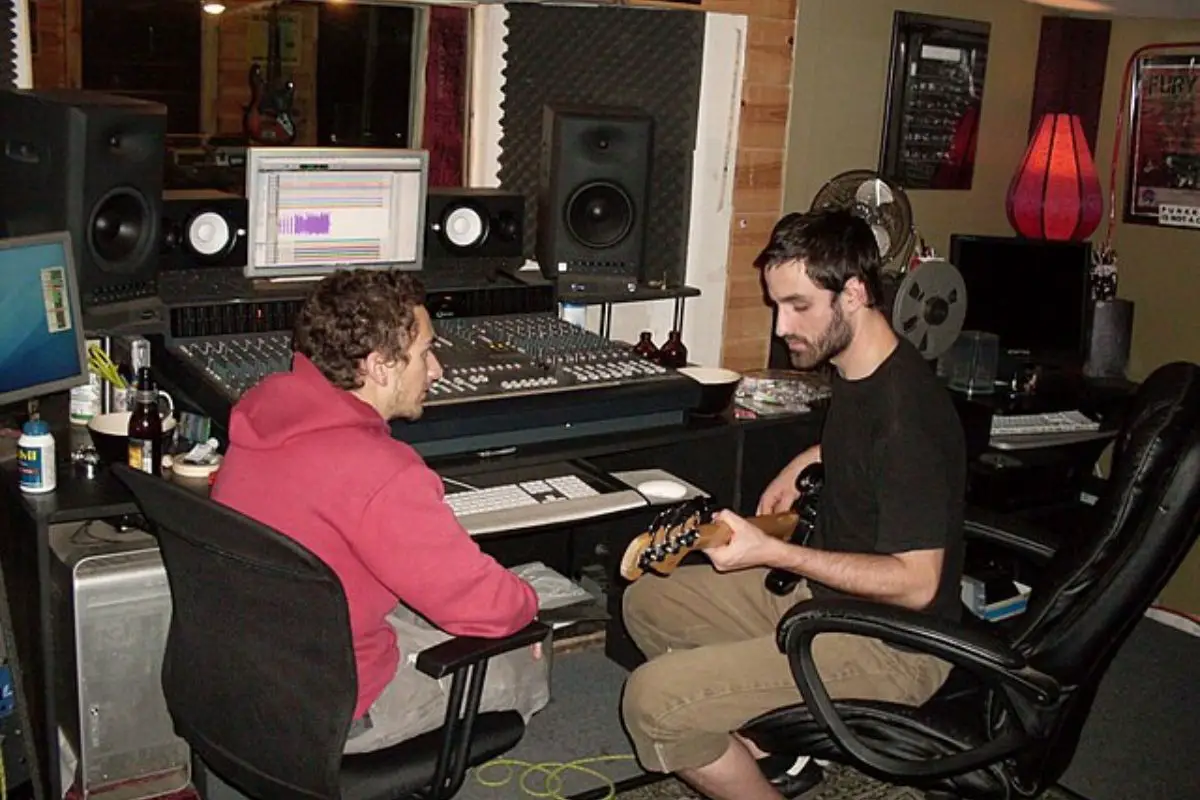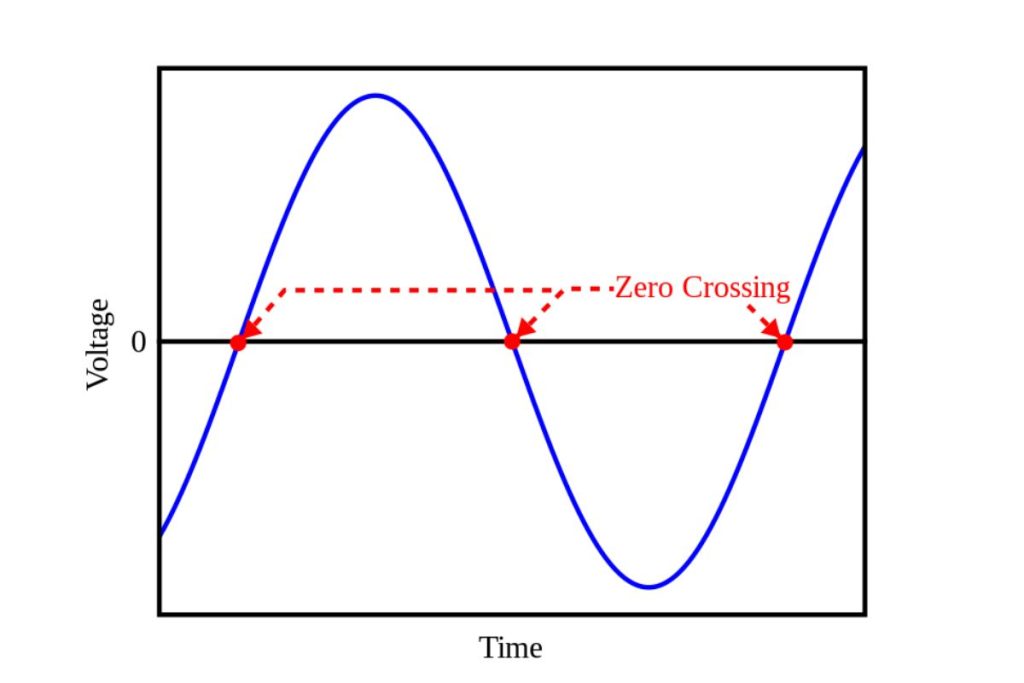Have you ever wondered what happens when a signal crosses the zero point? How does it impact music, communication systems, or even everyday technologies we rely on? In this article, we’ll explore the concept of zero crossing, its significance, and the practical applications it holds. So, join us as we dive into the realm of zero crossing and uncover its hidden secrets!
What is zero crossing? Zero-crossing captures the most prominent frequency by pinpointing the points in time where the sound wave crosses a reference amplitude. It is a compact way of representing a single frequency but may not be suitable for capturing multiple frequencies or sources simultaneously.
What is zero-crossing?
Zero-crossing in audio recording is the process of identifying the points in time when a sound wave crosses a reference amplitude, typically the zero line. Imagine you’re looking at a sound wave on a graph, and zero-crossing is like pinpointing the moments when the wave passes through the middle line, resembling an X shape. By detecting these crossings, we can determine the frequency of the most prominent component in the recording.

When using the zero-crossing technique, only the most prominent frequency is represented in the recording. It’s like zooming in on one specific aspect of the sound, capturing its essence. By noting the points where the sound wave crosses the reference amplitude, we can extract the frequency information accurately.
Can zero-crossing represent multiple frequencies at the same time?
Unfortunately, the zero-crossing format is only capable of representing one frequency at a time. It’s like focusing on a single musical instrument in an orchestra rather than hearing the entire symphony. If there are multiple sources of sound simultaneously, such as multiple bats vocalizing or complex audio environments, zero-crossing may not be the ideal choice.
Is the zero-crossing format suitable for all recording scenarios?
While zero-crossing has its limitations, it still has its own use cases. For instance, when recording a single source of sound in a less noisy environment, zero-crossing can provide a compact representation of the most prominent frequency. It’s like capturing the essence of that particular sound without any distractions. However, in scenarios where you want to capture a broad range of frequencies or multiple sources simultaneously, a full-spectrum audio recording technique would be preferable.
AKAI Professional MPK Mini MK3

AKAI Professional MPK Mini MK3
How does full-spectrum recording differ from zero-crossing?
Full-spectrum audio recording is a technique that captures the entire range of frequencies present in a sound source. Unlike zero-crossing, which focuses on a single frequency, full-spectrum recording gives you a comprehensive representation of the sound wave.
Full-spectrum recording excels in situations where you want to capture multiple sources of sound simultaneously. It’s similar to having a microphone that can hear everything happening around it, allowing you to distinguish different elements in the recording. Whether it’s recording a band performance or capturing natural sounds in the environment, full-spectrum ensures that no details go unnoticed.
Full-spectrum recording excels in situations where you want to capture multiple sources of sound simultaneously.
With full-spectrum recording, you can analyze the frequency content of the recording more thoroughly. It’s like having a magnifying glass that reveals intricate details within the sound. This technique allows for better post-processing, such as equalization and mixing, as you have a broader range of frequencies to work with. It also provides flexibility in extracting specific frequencies of interest.
Full-spectrum recording is particularly preferable when you need to capture a comprehensive picture of the sound, especially in scenarios involving multiple sources or complex audio environments. Zero-crossing focuses on representing a single frequency, providing a compact representation of the most prominent component in a recording.
When is the zero-crossing format preferable?
Zero-crossing format is particularly preferable in specific recording scenarios where capturing a single frequency is the main objective. It’s like zooming in on that one captivating guitar riff or vocal melody, isolating it from any other distractions. Here are some situations where the zero-crossing format shines:
- Solo instrument recording: When you want to focus on the nuances of a solo instrument, zero-crossing can provide a clean and precise representation of its frequency.
- Speech recordings: For speech recordings, the zero-crossing format can help capture the clarity and articulation of the speaker’s voice.
- Sound effects production: In the world of sound design and creating unique effects, a zero-crossing format can isolate and emphasize specific sound characteristics.
Are there any limitations to the zero-crossing format?
Yes, the zero-crossing format does have limitations. While it excels at representing a single frequency, it struggles to capture multiple frequencies simultaneously. It’s like trying to hear a whole choir while only focusing on the lead singer. In scenarios where you need to capture a broader range of frequencies or multiple sources of sound, full-spectrum recording would be more appropriate.
Dos and Don’ts of using zero-crossing format:
| Dos | Don’ts |
|---|---|
| Use zero-crossing for single-source recordings. | Rely solely on zero-crossing for complex audio environments. |
| Utilize zero-crossing to highlight specific frequencies. | Expect zero-crossing to capture the full sonic landscape. |
| Experiment with zero-crossing in sound design and speech recordings. | Use zero-crossing as the go-to technique for all recording scenarios. |

Is full-spectrum audio recording the better choice?
Full-spectrum audio recording offers several advantages that make it the go-to choice in many recording scenarios. It provides a comprehensive representation of all frequencies present in the sound, allowing you to capture the complete sonic picture. Here’s why full-spectrum recording stands out:
- Capturing multiple sources: Full-spectrum recording excels at capturing multiple sources of sound simultaneously. It’s like having a microphone that can capture the entire orchestra, highlighting each instrument’s contribution.
- Flexibility in post-processing: With a full-spectrum recording, you have access to a wider range of frequencies during post-processing. This allows for precise equalization, mixing, and other sound manipulations.
- Detailed frequency analysis: Full-spectrum recording enables in-depth frequency analysis, helping you understand the intricate details and characteristics of the recorded sound.
When it comes to choosing between zero-crossing and full-spectrum recording, it’s important to consider the specific recording scenario and your desired outcome. Here are some factors to consider:
- Recording objective: Determine whether your goal is to capture a specific frequency or a comprehensive representation of the sound.
- Sound source: Consider the nature of the sound source – is it a single instrument, speech, or a complex arrangement involving multiple sources?
- Environmental factors: Take into account the noise level and other sound sources present in the recording environment.
- Post-processing requirements: Think about the type of processing you plan to apply to the recording and whether specific frequency analysis is necessary.
To help you make the right choice, consider the following guidelines:
Zero-crossing is preferable when:
- You want to focus on capturing a single frequency.
- You have a specific source that stands out from the rest.
- The recording environment is less noisy, allowing for clean captures.
Full-spectrum recording is preferable when:
- You need to capture a broad range of frequencies or multiple sources simultaneously.
- The recording environment is complex or noisy.
- You require detailed frequency analysis and post-processing flexibility.
Comparison of zero-crossing and full-spectrum audio recording techniques
| Zero-Crossing | Full-Spectrum | |
|---|---|---|
| Frequency Range | Limited to a single frequency | Captures the entire frequency range |
| Representation | Compact representation of the most prominent frequency | Comprehensive representation of all frequencies |
| Source Isolation | Isolates specific frequencies or sound sources | Captures multiple sources simultaneously |
| Post-Processing Flexibility | Limited flexibility in manipulating frequencies | Offers greater flexibility for sound manipulation |
| Noise Handling | Less effective in noisy environments | Can capture a broad range of frequencies in complex environments |
Remember, there’s no one-size-fits-all answer, and sometimes, using a combination of techniques might be the best approach. Ultimately, the choice depends on your specific recording goals and the characteristics of the sound source.
Advantages and disadvantages of full-spectrum and zero-crossing in audio recordings
When it comes to choosing between zero-crossing and full-spectrum audio recording techniques, it’s important to weigh the advantages and disadvantages of each approach. Understanding the pros and cons can help you make an informed decision based on your specific recording needs.
Advantages (Pros) of Zero-Crossing:
- Precise representation of a single frequency of interest.
- Clean captures in less noisy environments.
- Emphasizes specific frequencies or sound sources.
Disadvantages (Cons) of Zero-Crossing:
- Limited in capturing multiple frequencies simultaneously.
- Less effective in complex or noisy environments.
- Reduced flexibility in post-processing and sound manipulation.
Advantages (Pros) of Full-Spectrum Recording:
- Comprehensive representation of the entire frequency range.
- Capable of capturing multiple sources of sound simultaneously.
- Provides flexibility in post-processing and equalization.
Disadvantages (Cons) of Full-Spectrum Recording:
- Requires more computational resources and storage space.
- Complexity in analyzing and working with a large amount of frequency data.
- Can capture unwanted noise along with the desired sound sources.
Understanding the advantages and disadvantages of zero-crossing and full-spectrum recording techniques enables you to choose the most suitable approach based on your specific recording scenario and desired outcome.
If you want even more great tips and information, check out the video below.
Frequently Asked Questions (FAQ)
Here are some common questions about zero-crossing and full-spectrum audio recording techniques:
Can I use a zero-crossing format for recording music with multiple instruments?
No, the zero-crossing format is not ideal for recording music with multiple instruments. It focuses on isolating a single frequency, making it more suitable for scenarios where you want to capture a specific sound source or frequency of interest. For capturing multiple instruments simultaneously, full-spectrum recording is recommended.
Can I switch between zero-crossing and full-spectrum recording during a recording session?
Yes, you can switch between zero-crossing and full-spectrum recording techniques during a recording session if needed. Consider the specific requirements of each recording scenario and adjust accordingly. It’s important to note that switching between techniques may involve adjusting microphone settings or using different recording equipment.
Are there any special considerations for post-processing when using zero-crossing or full-spectrum recording?
Yes, there are some considerations for post-processing when using zero-crossing or full-spectrum recording. For zero-crossing recordings, since they focus on a specific frequency, post-processing may involve manipulating that frequency or applying effects targeted to that specific sound source.
In contrast, full-spectrum recordings offer a wider range of frequencies to work with, allowing for more comprehensive post-processing options, including equalization, mixing, and effects across the entire frequency spectrum.
Conclusion
We’ve delved into the world of zero-crossing and full-spectrum audio recording techniques, exploring their differences and applications. It’s important to understand the strengths and limitations of each technique to make informed decisions in your audio recording journey. Whether you’re zero-crossing in on a single frequency or immersing yourself in the full-spectrum soundscape, finding the right approach can make all the difference in capturing high-quality audio.
Let me know your questions in the comments section below (I read and reply to every comment). If you found this article helpful, share it with a friend, and check out my full blog for more tips and tricks on audio production and engineering. Thanks for reading, and keep rocking those recordings!
Key Takeaways
This article covered zero-crossing and full-spectrum audio recording techniques, highlighting their differences and use cases. Here are some key takeaways:
- Zero-crossing format represents a single frequency, ideal for isolating specific sound sources.
- Full-spectrum recording captures the entire frequency range, making it suitable for capturing multiple sources and providing post-processing flexibility.
- Consider the recording scenario, desired outcome, and characteristics of the sound source when choosing between the two techniques.
- Zero-crossing is advantageous for single-frequency focus, while full-spectrum recording excels in capturing a broader sonic landscape.
- Remember to adjust post-processing techniques based on the chosen recording format.















